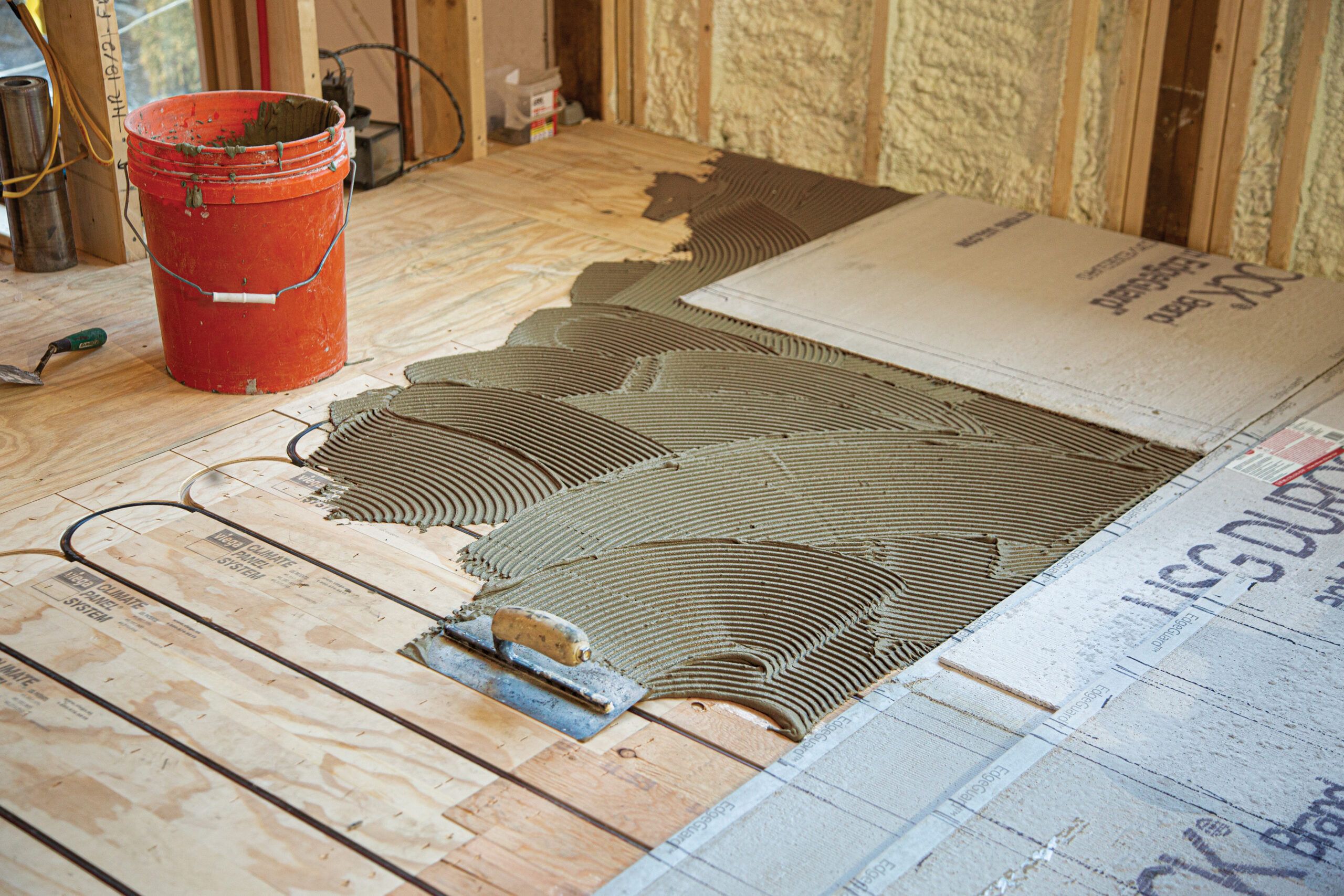We may be compensated if you purchase through links on our website. Our Reviews Team is committed to delivering honest, objective, and independent reviews on home products and services.
Radiant floor heating uses infrared radiation to heat objects and people directly, rather than just the air, providing consistent warmth and comfort. This type of home heating system can be more energy-efficient than traditional forced-air systems, especially in well-insulated homes. Whether you’re considering a hydronic system that circulates hot water or an electric system using heating cables, radiant floor heating can transform your living space into a cozy haven.
All About Radiant Floor Heating
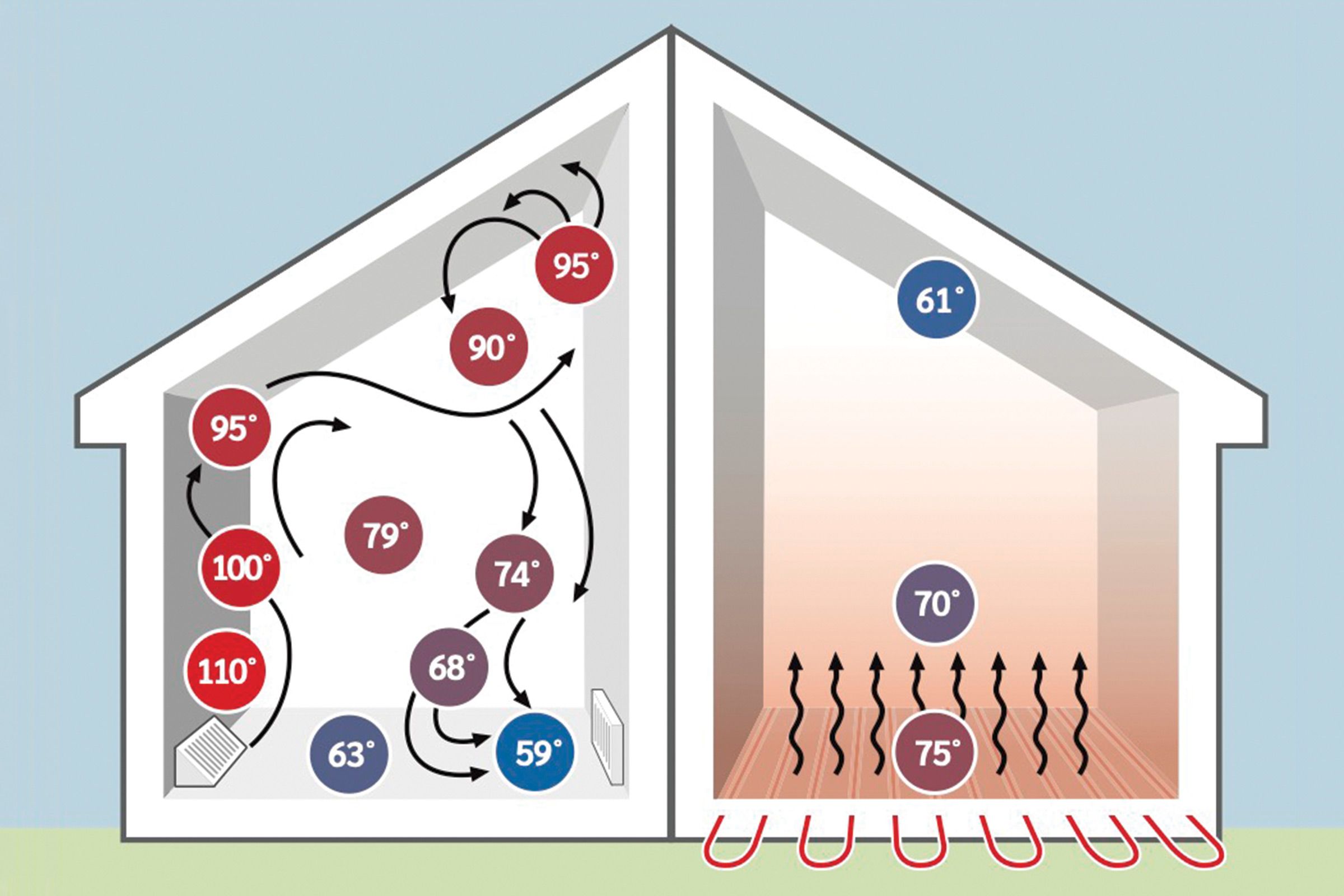
Radiant floor heating systems supply heat similar to how the sun warms the earth. As the heat moves upward, it is evenly distributed across the floor surface. The floor acts as a thermal mass, storing and slowly releasing heat, maintaining consistent temperatures.
This method of heating suffers minimal heat loss between the surface in the room, unlike ductwork in forced air systems. It also eliminates cold spots that are common with traditional systems.
There are two different types of radiant floor heating that are ideal for homes—hydronic and electric.
What is Hydronic Radiant Floor Heating?
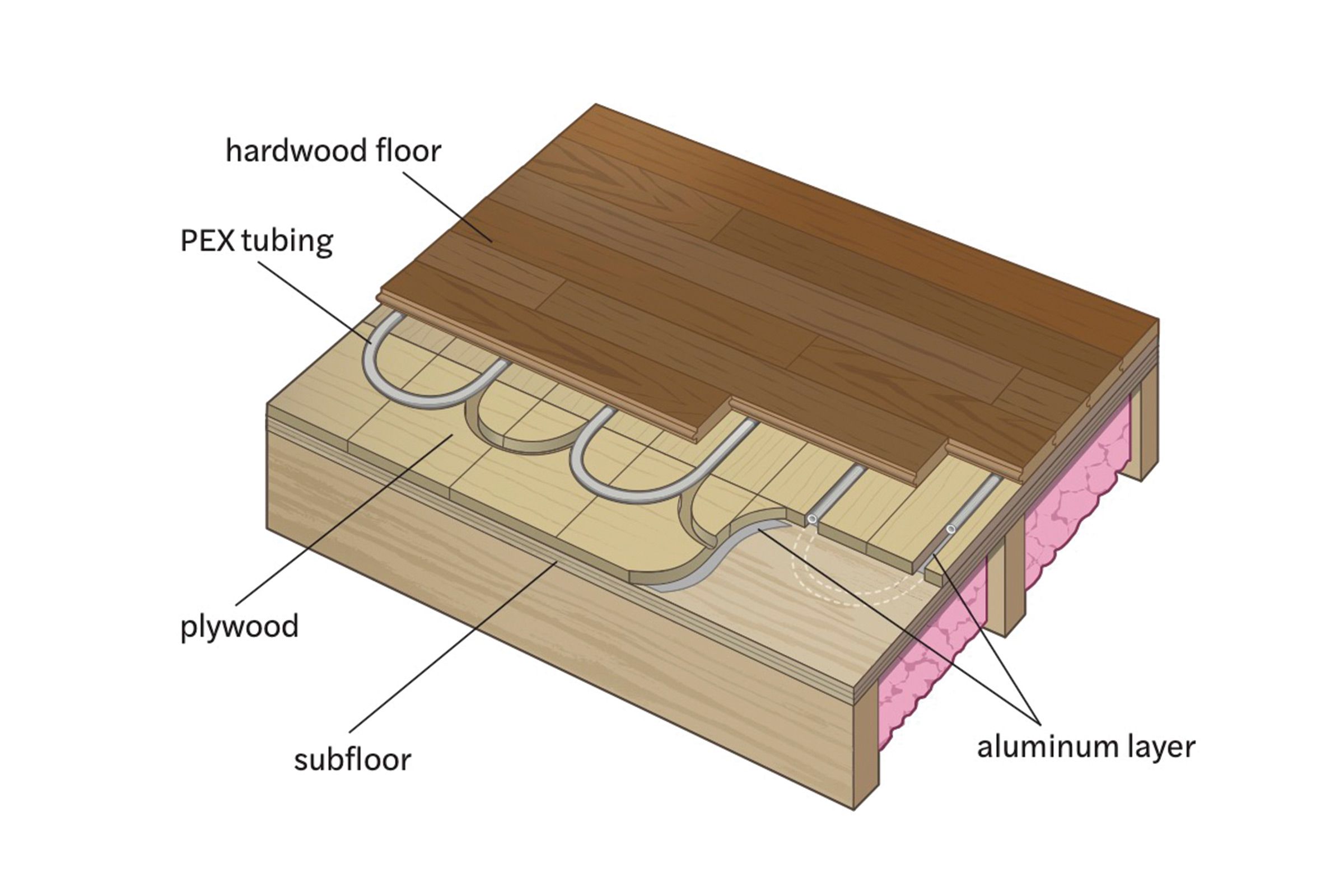
Hydronic systems use heated water, which is then pumped through the cross-linked polyethylene (PEX) tubing installed under the floor. These are the most popular option, and they tend to be more cost-effective and energy-efficient than electric radiant heating systems, especially in colder climates.
Hydronic systems typically last 40 to 50 years, with boilers having an average lifespan of 15 to 20 years. Key components of these systems include:
- Aluminum heat transfer plates: Help distribute heat evenly across the floor surface
- Boiler or water heater: Heats the water circulating through the system
- Manifolds: Distribute water to different zones in the house
- PEX tubing: Flexible, durable, and available in long lengths for continuous installation
Aluminum Heat Transfer Plate Options
Homeowners have a few different options for their aluminum heat transfer plates:
Aluminum Over Plywood Panels
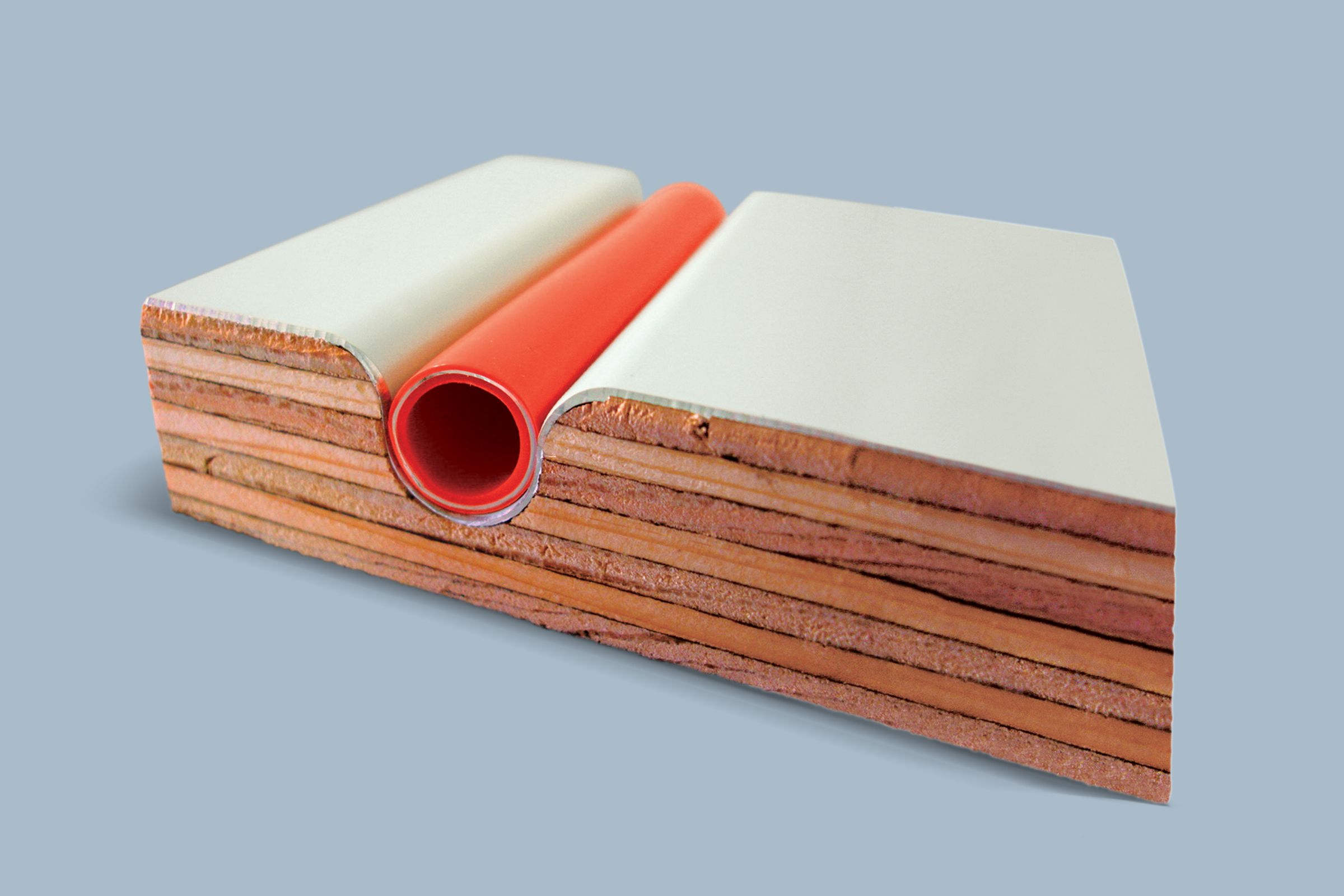
Aluminum over plywood panels, as in the example above from Warmboard, combines the structural strength of plywood with the heat-conducting properties of aluminum. An aluminum layer runs under the tubing tracks. They’re ideal for new construction or major renovations, adding minimal height to the floor while providing excellent heat distribution.
Aluminum Transfer Plates
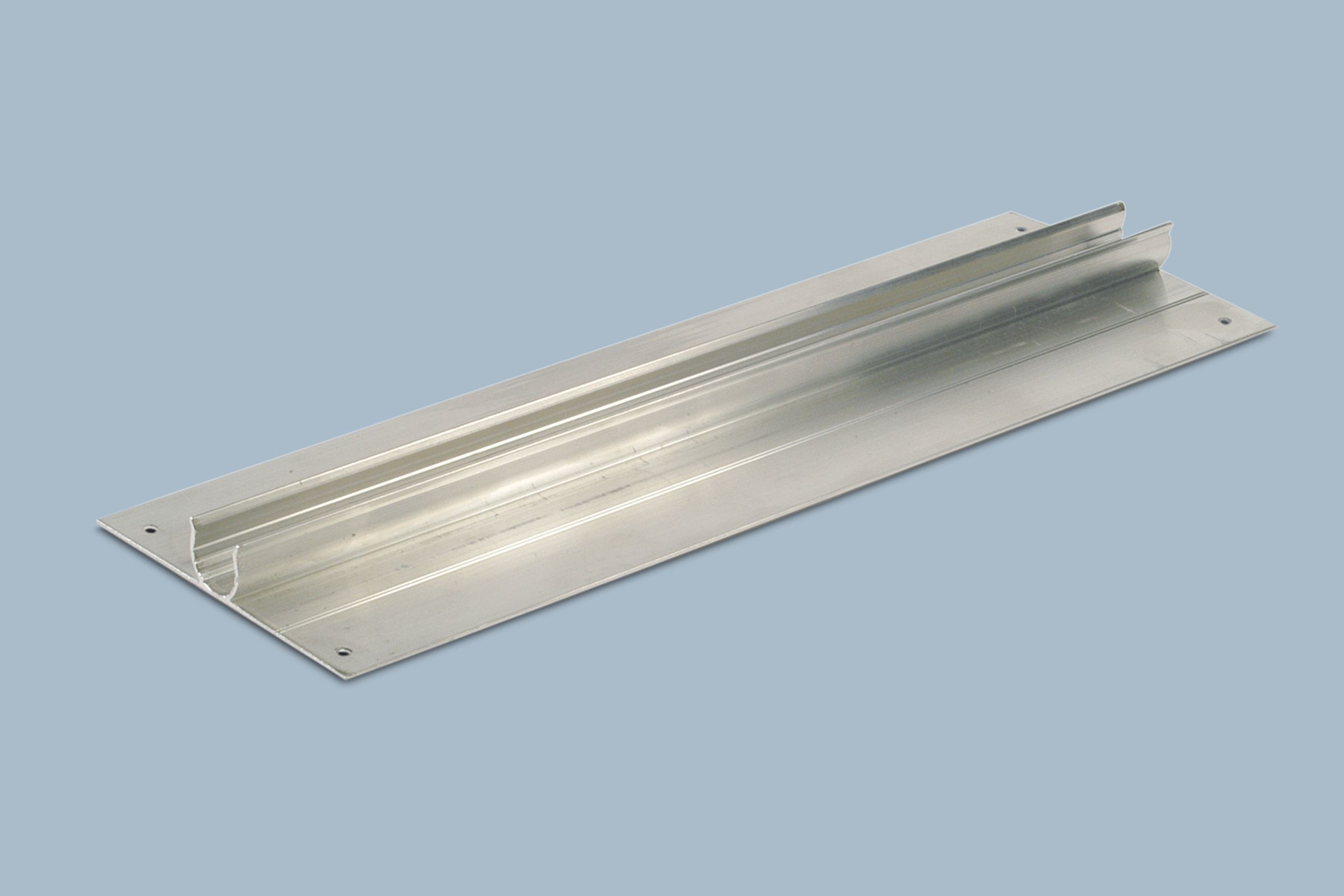
Perfect for retrofitting radiant heating systems in existing homes, aluminum transfer plates, such as the Uponor Joist Trak Heat Transfer Panel shown above, attach to the underside of the subfloor, typically in a basement ceiling. They hold the .025-inch-thick PEX tubing and efficiently transfer heat to the floor above.
Aluminum Over OSB Panels
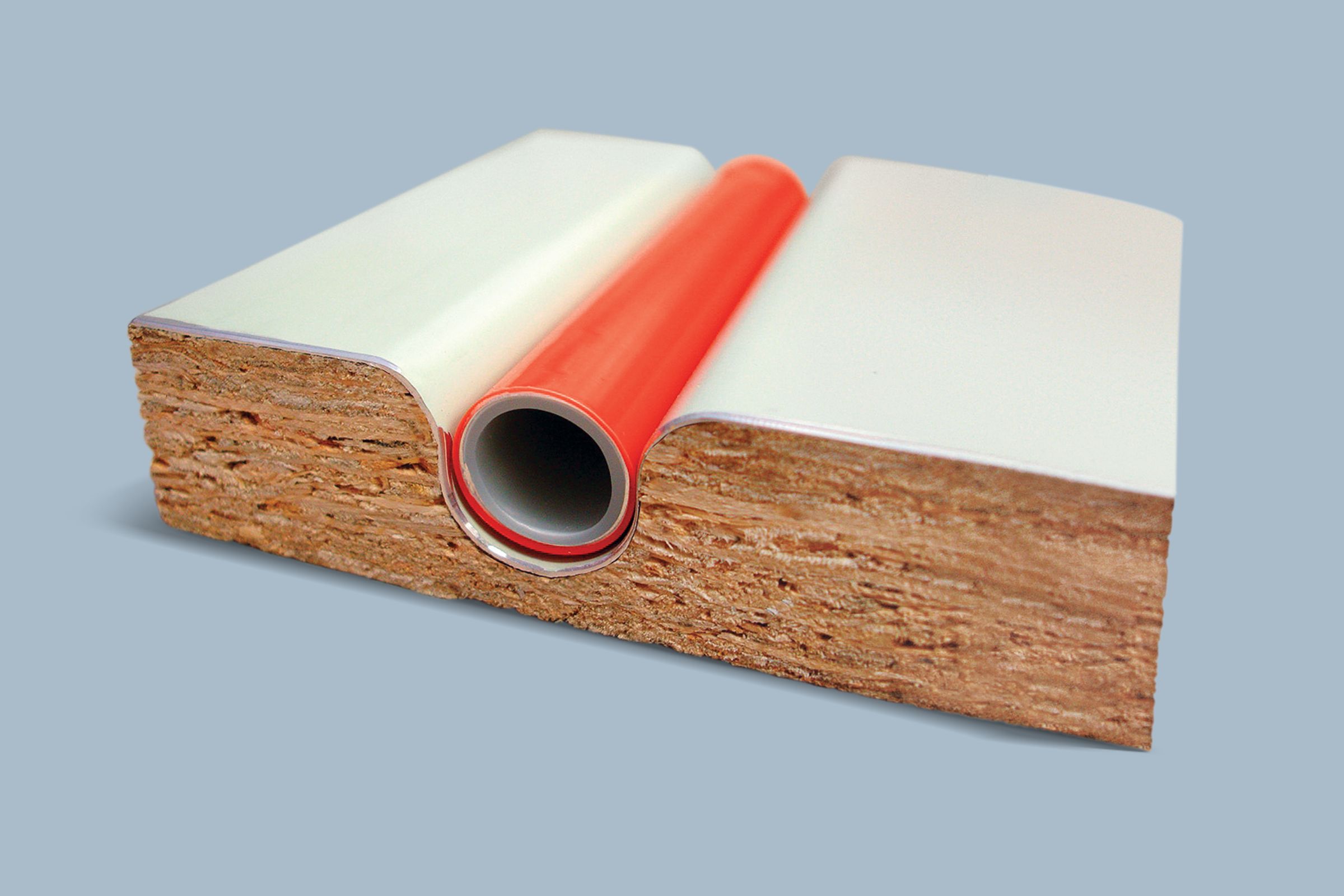
Aluminum oriented strand board (OSB) panels, such as the Warmboard example above, are often used in renovations. They offer a thinner profile than plywood versions, making them suitable for installations where floor height is a concern, and they can easily be screwed over an existing subfloor (or in walls or ceilings). The aluminum layer provides efficient heat transfer from the PEX tubing to the floor surface.
Energy-Efficient Upgrades for Hydronic Systems
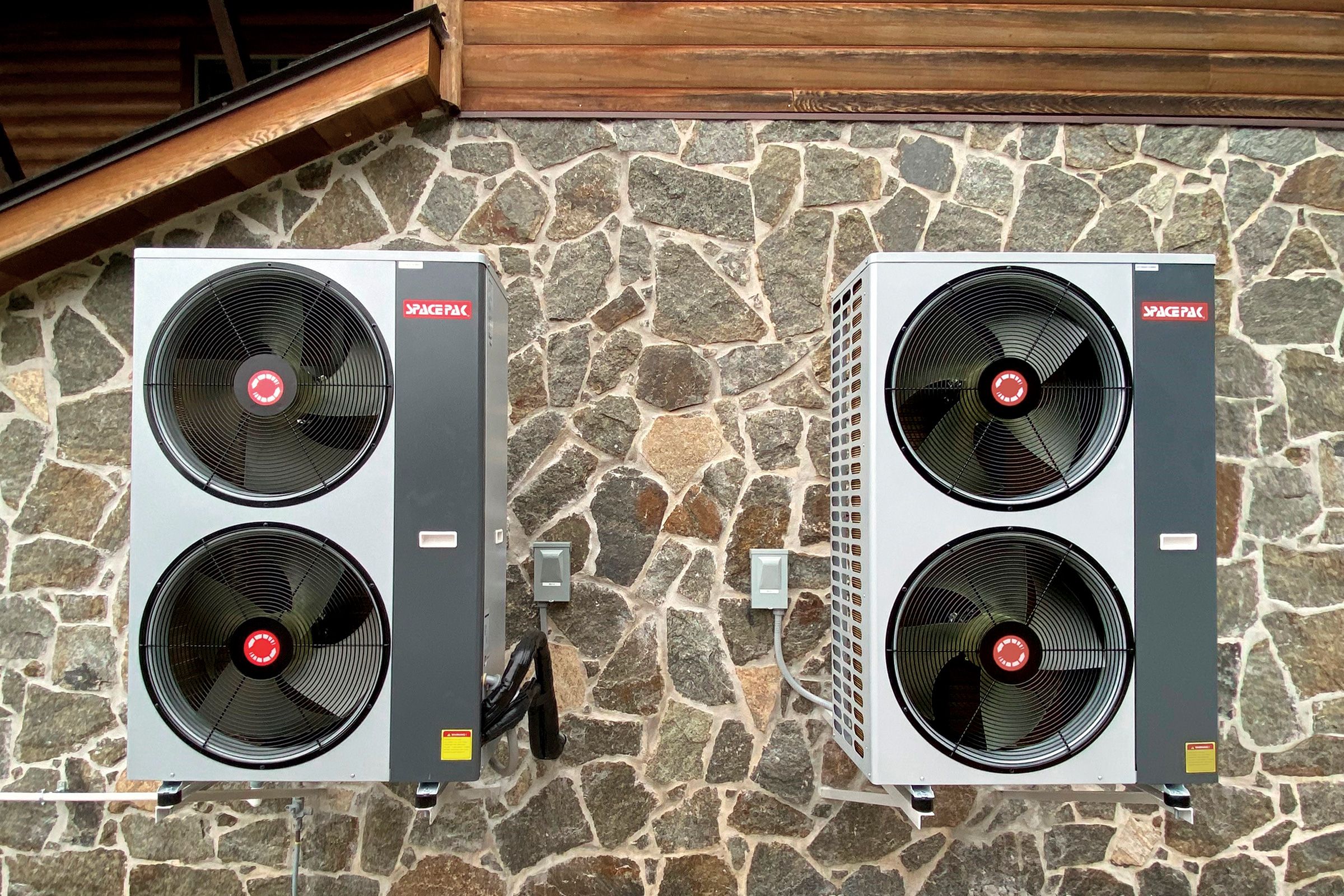
To maximize the efficiency of your hydronic radiant heating system, there are two upgrades we recommend considering.
High-efficient boilers, also known as condensing boilers, can achieve over 90% efficiency by condensing flue gases in a heat exchanger. While more expensive upfront, they can significantly reduce long-term energy costs, especially in colder climates, and could result in tax savings.
Air-to-water heat pumps use electricity to extract heat from outdoor air, even on cold days. They can provide both heating and cooling, making them a versatile choice for year-round comfort. While the initial investment is higher, they offer excellent energy efficiency and can also supply household hot water.
What Is Electric Radiant Floor Heating?
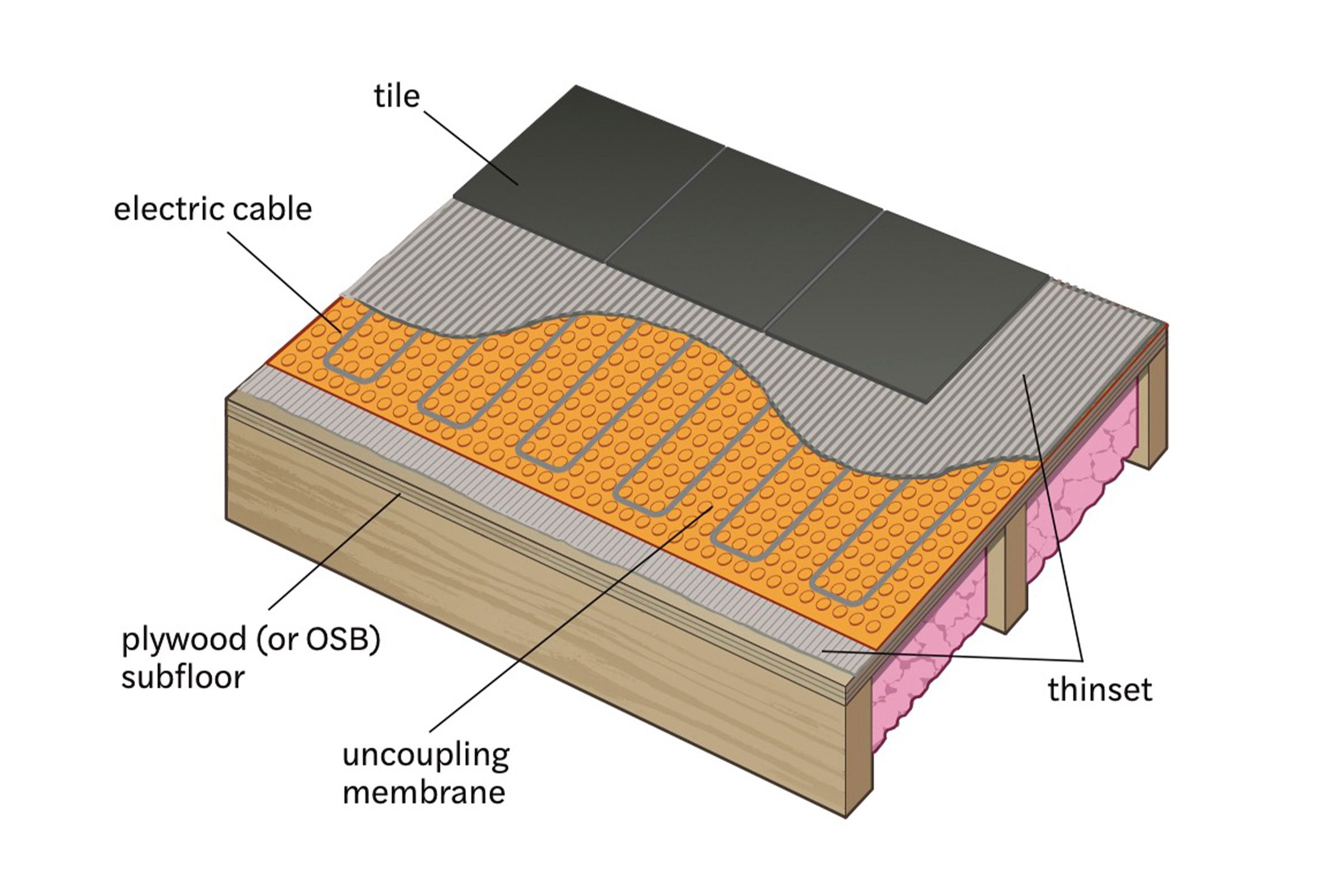
Electric radiant floor heating systems use electric heating cables or mats installed under the floor. As the wires within the cables or mats heat up, the heat is transferred to the room. It’s ideal for smaller areas, such as bathrooms or kitchens, for more localized heating.
The energy efficiency of electric radiant heating systems depends on your local electricity rates and flooring type. With proper care and maintenance, they tend to last longer compared to traditional heating options—between 30 and 40 years.
Installation Options
Homeowners who want to install an electric radiant heating system within their home have a few options:
Electric Cable with Uncoupling Membrane
Electric cable with uncoupling membranes, as used in the DITRA-HEAT Uncoupling Membrane, combines heating cables with a waterproof membrane. They’re ideal for tile and stone floors. The membrane allows for movement between the substrate and the finished floor, preventing cracks.
Electric Mat
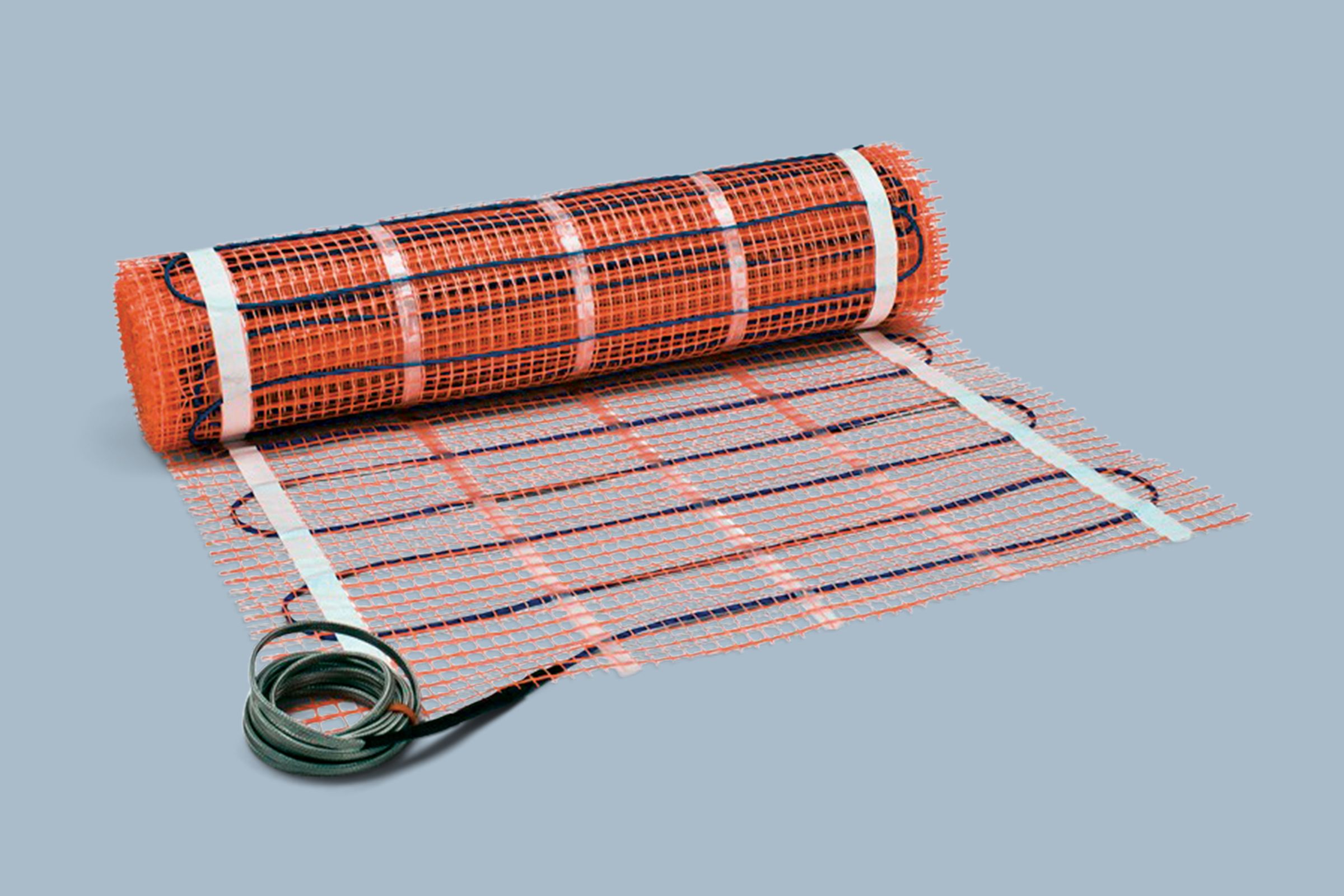
Pre-made mats, including the SunTouch TapeMat, come with embedded heating cables that offer easy installation for uniform spaces. However, they can also be cut to fit around obstacles, such as a sink pedestal, and are suitable for various floor types. They come in a wide range of sizes, and some have holes for shower drains. Others use double-sided tape and can be laid over plywood, backer board, or a concrete slab.
Electric Film
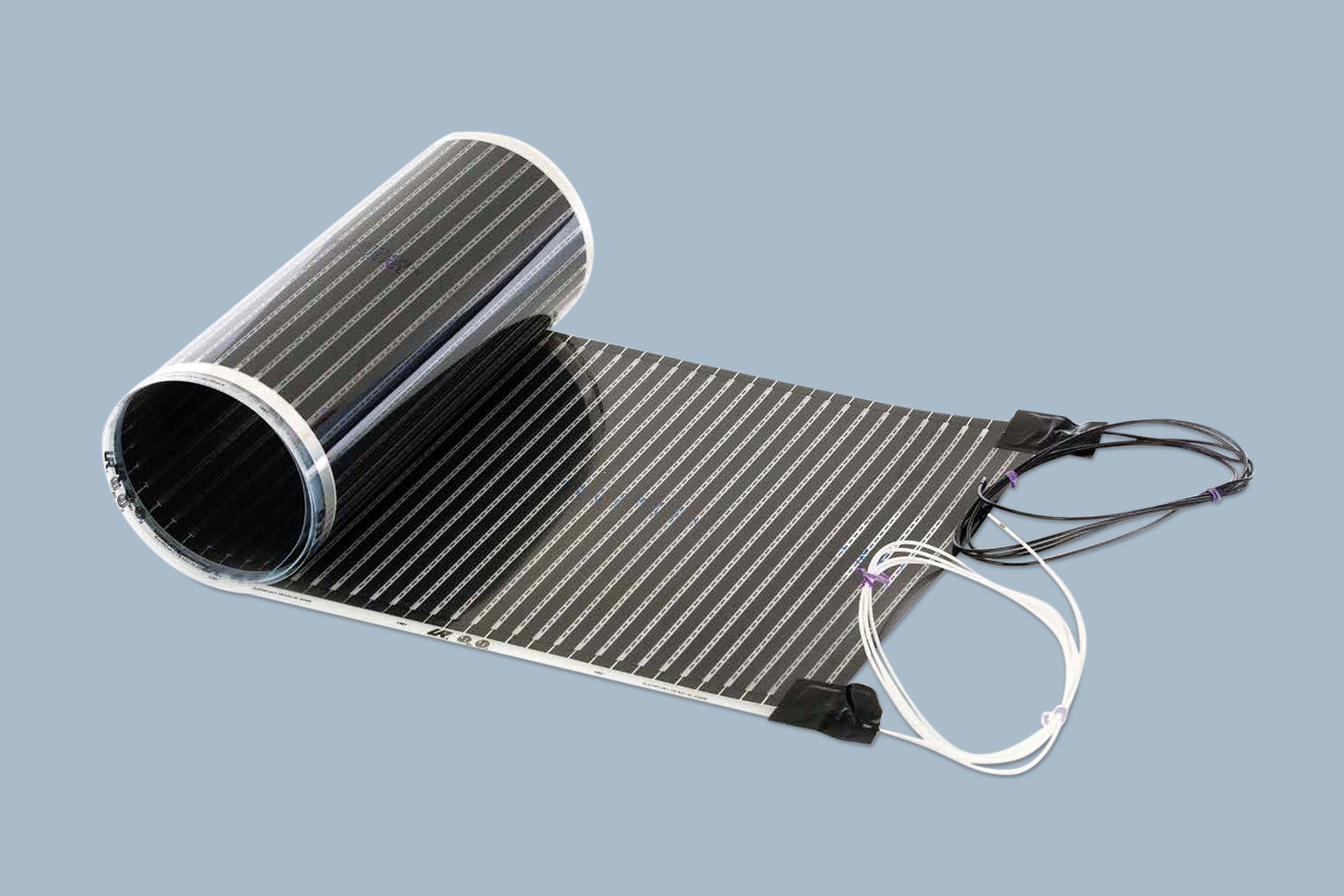
Electric film is designed to float under click-together floors, such as laminate, vinyl, floating tile, or engineered wood, with an underlayment over the subfloor. This option provides gentle, even heat without adding significant height to the floor. One example of electric film is the QuietWarmth Heating Film for Click-Together Floors.
Electric Peel-And-Stick Film
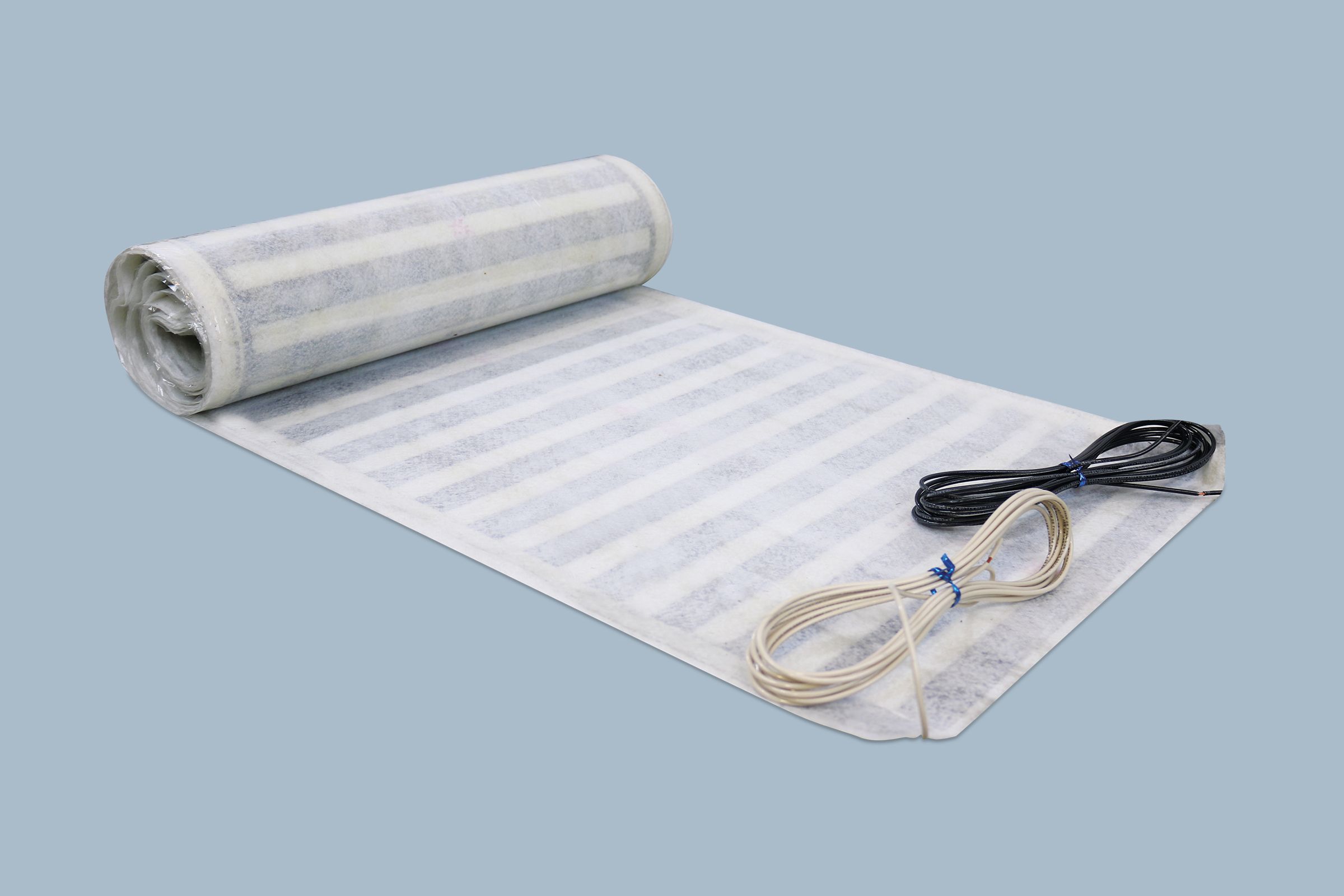
Electric peel-and-stick film options, including the QuietWarmth Peel & Stick for Tile and Glue-Down Floors, combine heating elements with a peel-and-stick waterproof membrane, simplifying installation under tile, stone, or glue-down floors. It can’t be used in the shower or with vinyl or linoleum floors.
TOH Pro Tip: “Because a tiny nick can cause a malfunction, it’s good practice to test the resistance of any electric radiant system and floor-temperature sensor with a multimeter before and after installation, and after covering it with flooring. Some manufacturers require a log of these tests for warranty purposes.” —Charlie Silva, home builder
How Much Are Radiant Floor Heating Systems?
Homeowners can expect to pay between $6 and $20 per square foot* for a radiant floor heating system, but the cost can vary depending on the type of system and the area to be heated. Other factors that could impact cost include the type of flooring, installation requirements, site prep, and location.
A hydronic system tends to cost between $19,000 and $48,000, while an electric floor heating system is often between $19,000 and $36,000.
*Cost data in this article sourced from contractor estimates used by Angi.
Pros and Cons of Radiant Floor Heating
Before deciding on radiant floor heating, consider these pros and cons to determine if it’s the best fit for your home and lifestyle:
Pros
- Quiet: Radiant floor heating operates silently, eliminating the noise from fans associated with forced-air systems or the occasional sounds from radiators and baseboard heaters.
- Comfortable: By warming surfaces to temperatures closer to your body’s preferred temperature, radiant heat creates a comfortable environment even when air temperatures are cooler.
- Energy efficiency: Radiant floor heating systems can be significantly more efficient than traditional heating methods. Hydronic systems tend to be more energy efficient than electric systems.
- Easy to maintain: Radiant systems require minimal maintenance, with no filters to change.
- Helps with allergies: Radiant floor heating systems don’t collect and blow dust around like traditional options, which can aid with allergies.
Cons
- Pricey: The initial installation cost for whole-house radiant heating can be substantial, particularly if you need to install a boiler. This can be a barrier for homeowners looking for an immediate, cost-effective solution.
- Not ideal for poorly insulated homes: The effectiveness of radiant heating can be compromised by cold walls and air leaks. Proper insulation and sealing are necessary to maintain efficiency.
- Slow: Due to the thermal mass of floors, it can take hours for radiant systems to adjust to temperature changes, making quick adjustments challenging.
- Only provides heat: Unlike HVAC systems that can also provide air conditioning, radiant systems are typically heat-only solutions.
Where Should You Use Radiant Floor Heating?
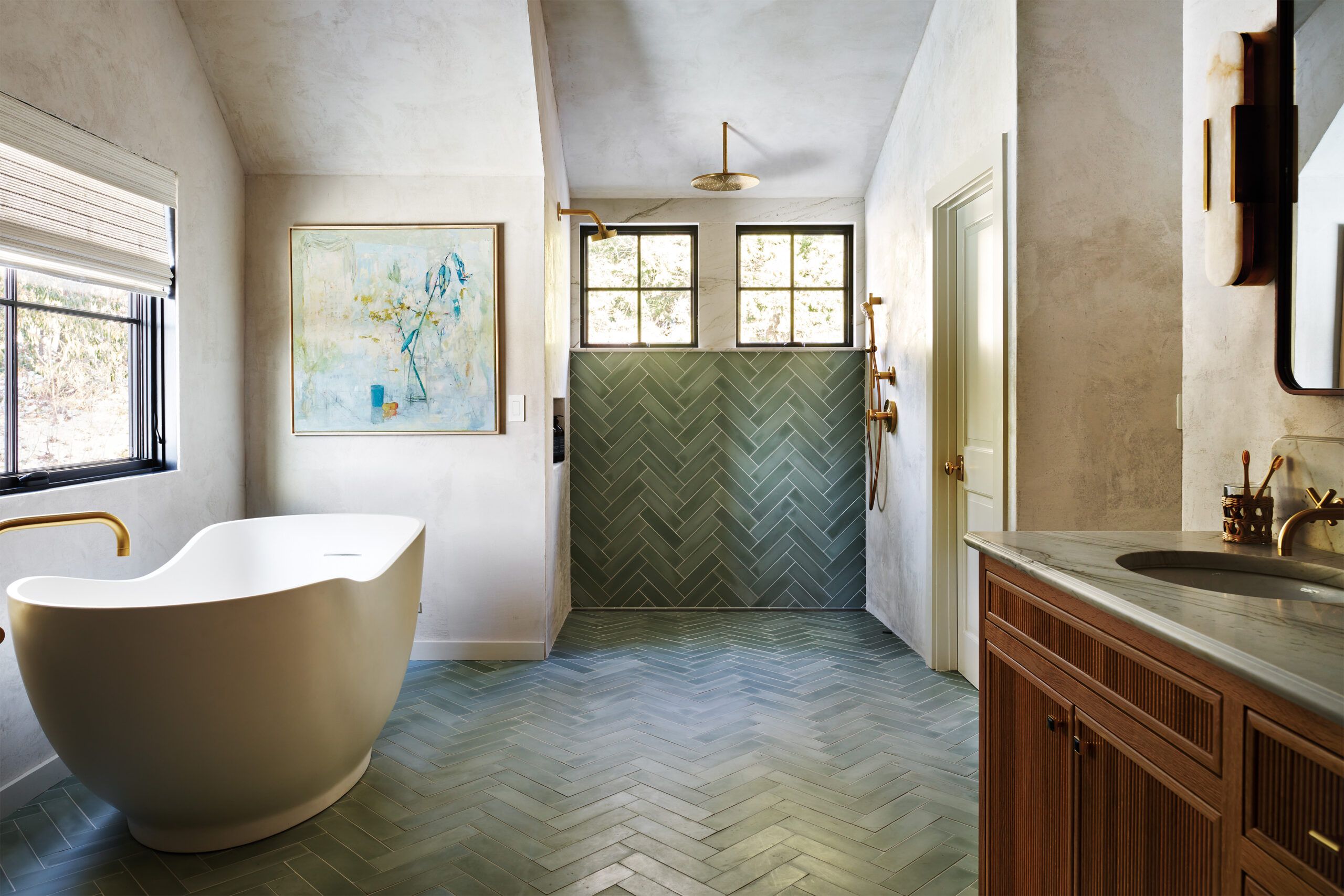
Radiant heating can be used in various areas of your home, but it’s often recommended for smaller rooms, such as the bathroom, kitchen, or entryway. The tiles in these spaces make it the perfect place for radiant heat. However, these systems are also often found in garages and basements.
Radiant heating systems aren’t restricted to the floor. They can be found behind the walls or in the ceiling. For example, a hydronic tubing system can be installed behind the walls of a chilly stairwell to warm up the space. In addition, both hydronic and electric systems can be installed outside and used to melt snow on walkways, driveways, and patios.
What Type of Flooring Works with Radiant Floor Heating Systems?
Ceramic tile is the most effective option for radiant floor heating systems as it stores heat and conducts well. However, just about any type of flooring can be used, including wood, concrete, vinyl, linoleum, and even carpeting.
For wood floors, both hydronic and electric systems can be used, but care must be taken to prevent warping. It’s recommended that you keep surface temperatures below 80°F and choose stable wood species.
Basements, garages, and workshops tend to have concrete floors. Hydronic systems can be installed here during new construction, while electric systems can be added to existing slabs.
While you can technically use carpeting, it’s not often recommended as it will decrease the efficiency of your heating system. If you’d prefer rugs or a carpet, choose lower-pile options with thin pads, and aim for a total R-value of 2.5 to improve efficiency.
TOH Pro Tip: “In-floor radiant can cause wood floors to expand and contract even more than usual. To reduce the chance of the boards cupping, we generally keep them less than 6 inches wide.” —Tom Silva, general contractor
Our Conclusion
Radiant floor heating offers a comfortable, efficient, and silent heating solution for many homes. While the initial cost can be higher than traditional systems, the long-term benefits in comfort and potential energy savings make it an attractive option. Consider your home’s specific needs, climate, and budget when deciding if radiant floor heating is right for you.
